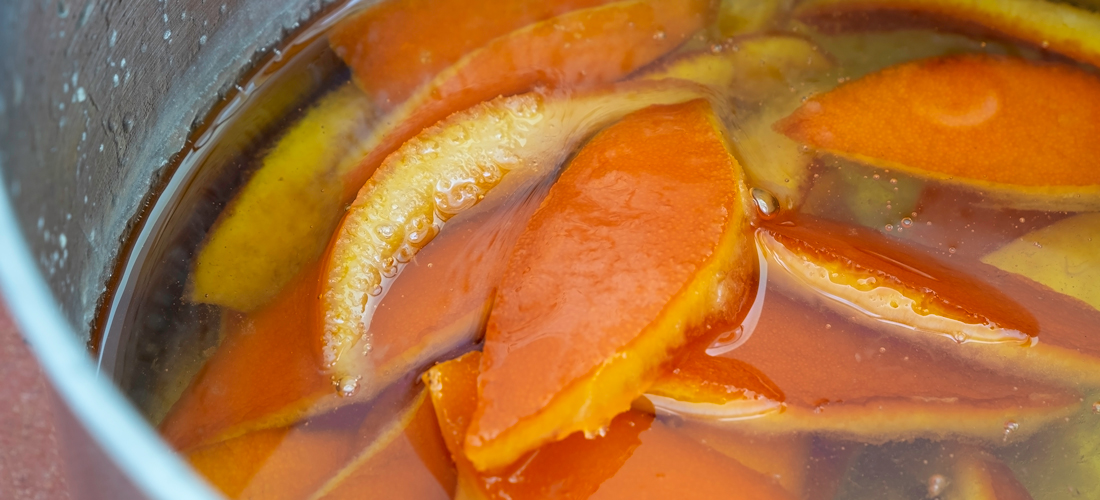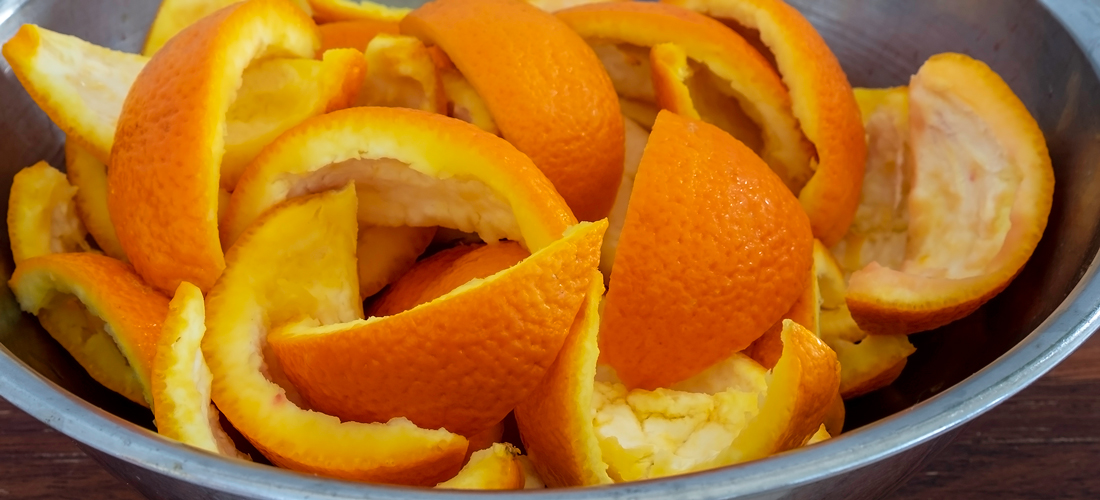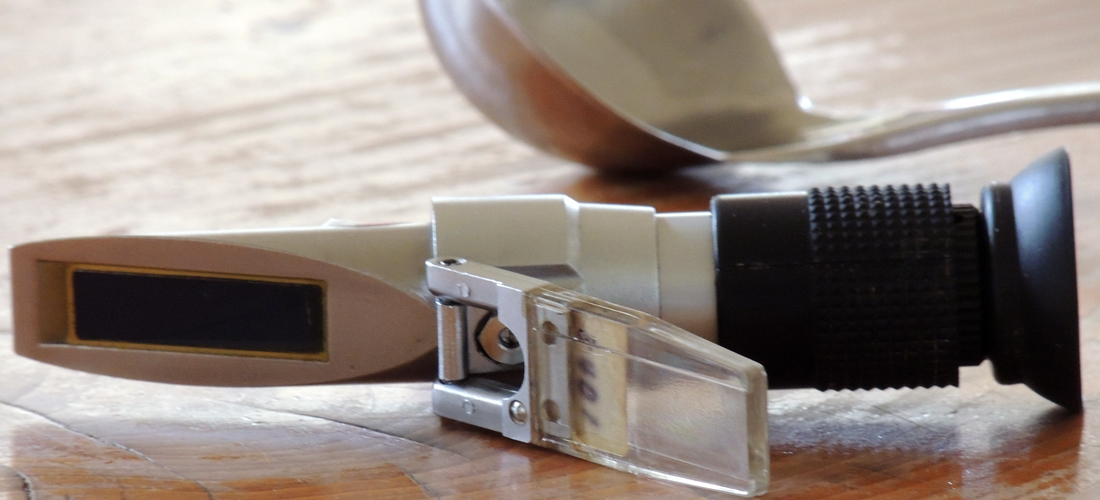Candied Orange Peel: Italian Style
- Candied, Crystallised & Glace Fruits

The winter citrus harvest is a colourful and intoxicating culinary affair. Regardless of which part of the fruit is used, flesh, juice or peel, its sweet tang is distinctive. Candied orange peel is so easy to make, less than 15minutes per day after the initial preparation. Then within 7-10 days, what is usually disposed of is transformed into a high quality artisanal candied peel. It’s glistening vivid orange colour and soft slightly chewy and fragrant peel will become a much-loved pantry partner. Its versatility will astound.
Use in your favourite Christmas specialties that call for candied peel, rich Christmas cakes, paneforte, cavallucci, fruit mince tarts, or in citrus-based cakes. Add an original twist to your next cheesecake, panna cotta, bavarois or in ice-cream desserts-cassata, orange ice cream, gelato or dip in chocolate and serve as an after-dinner treat. And then it can be used to decorate cakes, slices, pavlova’s….. the list goes on. When the jar’s empty use the syrup to flavour up cocktails, mocktails, kombucha……and the list goes on.
Don’t throw your peels way, they have a useful life as candied peel or as an Orange Peel Cleaner .
- Preparation Time:
- 60 minutes plus steeping time
- Cooking Time:
- 30 minutes
- Quantity:
- 3 x 300 ml jars
INGREDIENTS
- 500g
- Orange peel, cut into sgements
- 125g
- White sugar
- 125g
- Fresh water
- 300g
- Liquid glucose

METHOD
After 3 quick successive blanchings of the peel, it’s reheated daily in the sugar syrup, then allowed to cool overnight and reheated again in the morning. Prepared over 7 days, it spends most of its time sitting around becoming candied.
If you are collecting the peels over a couple of days, store in an airtight container in the fridge. Alternatively, prepare the peels in one session and use the flesh over a couple of days. This is my preferred method.
Wash the fruit skin to remove any garden debris or wax if they have been commercially grown.
Cut a small amount from each end of the orange. Using a small sharp paring knife or equivalent, insert it into the peel, and through to the pith, but not into the flesh. Run the knife from the top to the bottom of the orange to create a wedge. Work progressively around the orange.
Use your hands to gently remove the peel with the pith attached, by separating it from the orange flesh.
Blanch the peel by placing them into a pot, cover with water and place on the heat. Bring quickly to the boil, then remove immediately, drain and place into a bowl of cold water to stop the cooking process. Repeat this process another 2 times. On the last time, instead of draining the peel when it reaches boiling point, turn the heat down and simmer gently for approximately 30 minutes or until the pith becomes translucent. This final stage will cook the peels, so they are tender and ready to absorb the sugar syrup in the next stage of candying.
To make the syrup, add the water and sugar to a clean saucepan. Place on the heat, simmer and stir occasionally until the sugar has dissolved completely. If using a refractometer, the syrup will be 49 brix. Refer to the Notes section below.
Bring the syrup to the boil, add the peels and then turn off immediately. Allow the peels to sit in the saucepan and syrup overnight. The next day, gently remove the peels with a slotted spoon and place in a bowl. Bring the sugar syrup to the boil, add the peels, and remove immediately from the heat. Allow the peels to cool in the syrup again overnight.
Repeat this process for 7-10 days. Each day the sugar syrup will thicken a little more until it has a honey-like consistency. A thin film will form on top. If using a refractometer, the reading will be 72 Brix. On the last day of bringing the sugar syrup to the boil, add the liquid glucose, stir to dissolve, and add the peels. Allow to cool in the syrup overnight. The glucose prevents the syrup from crystallizing.
The following day, remove the peels and layer in the dry sterilised storage jars. Fill to approximately 2.5cm (1 inch) from the top of the jar. Completely cover with syrup.
-
Seal, label and store in a cool dry place in the pantry for up to 12 months
Once opened, store in the fridge.
NOTES
- To produce clean brightly coloured peel, thoroughly wash the oranges to ensure dirt is removed which can accumulate in the pores of the peel.
- The blanching process removes the bitter flavour and helps to retain the vivid orange colour. As soon as the water comes to the boil, remove immediately to prevent the peel from overcooking and becoming mushy with the successive blanching and final cooking process.
- Candied peel can be made without a refractometer, but if there’s one in the household, it’s a very handy tool. It works like a prism and reacts differently to light (by giving a reading on the scale) depending upon the amount of sugar that's available in the liquid sample that is held between the top face plate and the main prism.Glucose is also called dextrose. It’s a simple sugar and found naturally in many fruits and honey. Compared to table sugar, glucose is less sweet and less soluble in water. Two forms are commercially available, liquid and powder. It’s used to increase the sugar content in beer and in the manufacture of syrups, confectionary, jam and to prevent sugar syrup from crystalizing. Liquid glucose is available in supermarkets.
- Variations: Other citrus fruit with a thick skin and pith that can be easily peeled away from its flesh, such as blood orange, lime, lemon, mandarin, grapefruit.
 Refractometer
Refractometer
